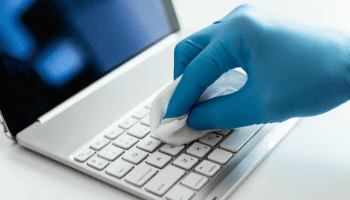When you do interviews, you need to make sure you get accurate details. It’s also important to make sure the finished transcript looks polished and professional. Everyone who works as a researcher, journalist, or worker needs to be able to make accurate, high-quality transcripts.
Here are some expert tips to help you create professional interview transcripts that leave a lasting impression:
Quality Audio Recording
One of the most crucial factors in creating a professional interview transcript is having high-quality audio recordings. Poor audio quality can lead to missing or misheard words. This makes it difficult to accurately transcribe the conversation.
To ensure clear and crisp audio, invest in a good microphone. Also, conduct interviews in a quiet environment.
Take Notes
During the interview, take notes on key points. This can also include important quotes and any other relevant information.
This will help you fill in any gaps that may have been missed during the recording. Or, it can provide context for certain statements. Having these notes handy while transcribing can also save time and ensure accuracy.
Use Transcription Software

Transcribing interviews manually can be time-consuming and prone to errors. Consider using transcription software to assist with the process.
These tools can help with time stamping and speaker identification. They even have features to improve audio quality.
Hiring professional transcription services is also an option. Particularly for those who want to save time and ensure high-quality transcripts. Click for transcription services to ensure accurate and polished transcripts.
Format Consistency
Consistency is key when it comes to creating professional interview transcripts. Use the same format throughout the document.
This includes font style and size, paragraph spacing, and indentation. This will ensure that your transcript looks polished and organized.
Clean Vs. Verbatim Transcription
When transcribing interviews, you have the option to create either a verbatim or clean transcript. Verbatim transcripts include every word and utterance. This includes filler words like “um” and “uh”.
Clean transcripts, on the other hand, omit these filler words. It focuses on delivering a more concise and polished document.
When selecting a transcript type, it’s crucial to consider your audience and purpose. Your content goals will guide the choice of transcript that aligns best with your needs.
Use Of Symbols And Conventions
Use symbols and conventions for non-verbal communication. This makes the transcript easier to read and understand. This can include laughter or pauses.
For example, use [Laughter] to show when someone is laughing or [Pause] for a moment of silence. Also, include speaker identification to differentiate between different speakers in the conversation.
Contextual Understanding
When transcribing an interview, it’s essential to have a good understanding of the context. This means having background knowledge on the topic.
Or, even conducting thorough research if necessary. This will ensure that you accurately capture the meaning behind certain statements. This also prevents any misinterpretations.r
Speaker Identification

Each speaker in your dialogue should be identified. It should not only be with their name but also with any relevant details that provide context to the reader or listener.
This adds more clarity to the transcript. It also reflects the professional and ethical aspects of your work.
Use Correct Terminology
Depending on the topic of your interview, it’s important to use the correct terminology and jargon. This will not only show your knowledge and expertise in the subject matter but also add credibility to your transcript.
Time Stamps
Incorporating time stamps into your transcripts is vital. Especially, for long-form media or academic/research purposes.
It allows for easy reference to audio segments of interest. This aids in the verification of the transcript content.
Paraphrasing And Summarizing
It’s not always necessary to include every single word spoken during an interview. Instead, paraphrasing and summarizing can help condense the transcript.
They also provide a clearer understanding of the main points discussed. But, it’s important to ensure that the meaning is not changed or misconstrued when doing so.
Accuracy Check
The best technology isn’t enough to make sure that interview transcripts are correct. Human ears are still the most important tool.
Always compare the technology’s work to the source audio. This will make sure there are no mistakes or words that were missed.
Incorporate Feedback
It’s important to include any comments or requests from the reporter. Especially if the interview was done for someone else or a specific reason.
This shows that you are skilled and willing to work together on the project. It also makes sure that the final transcript meets their needs.
Proofreading Transcripts And Editing

Before labeling the transcript as final, thorough proofreading and editing are essential. Look for any grammatical and typographical errors.
Additionally, look out for content-based discrepancies or inaccuracies. These might have slipped through the initial transcription process.
This final check will ensure a polished and professional transcript. And will reflect the original conversation.
Ensuring Confidentiality
When transcribing conversations, you have to follow any confidentiality agreements or privacy policies. Follow your client’s privacy rules when you redact or deal with private information.
Read Also: 5 Side Hustles To Earn Free Money Efficiently And Effortlessly
Legal Compliance
In some cases, the transcript may be used for legal purposes. So, it’s crucial to ensure that the transcription follows legal requirements and guidelines. This includes proper identification of speakers and accurate representation of their words.
Final Review
The final step in the process of interview transcripts is to review the entire document again. Does it precisely tell the story? Is it a faithful representation of the original conversation?
Address any doubts or issues with the transcript before it’s published or shared. This ensures that your final product meets the standards of accuracy and professionalism.
Create Accurate Interview Transcripts With These Tips
Creating professional interview transcripts requires attention to detail, consistency, and accuracy. By following these tips, you can produce transcripts that are informative and authoritative. It will also leave a lasting impression on your audience.
Remember to always maintain high standards of quality in your work. This ensures accurate and polished transcripts that reflect the professionalism of your brand. Happy transcribing!
Is this article helpful? Keep reading our blog for more.
Read Also:




























